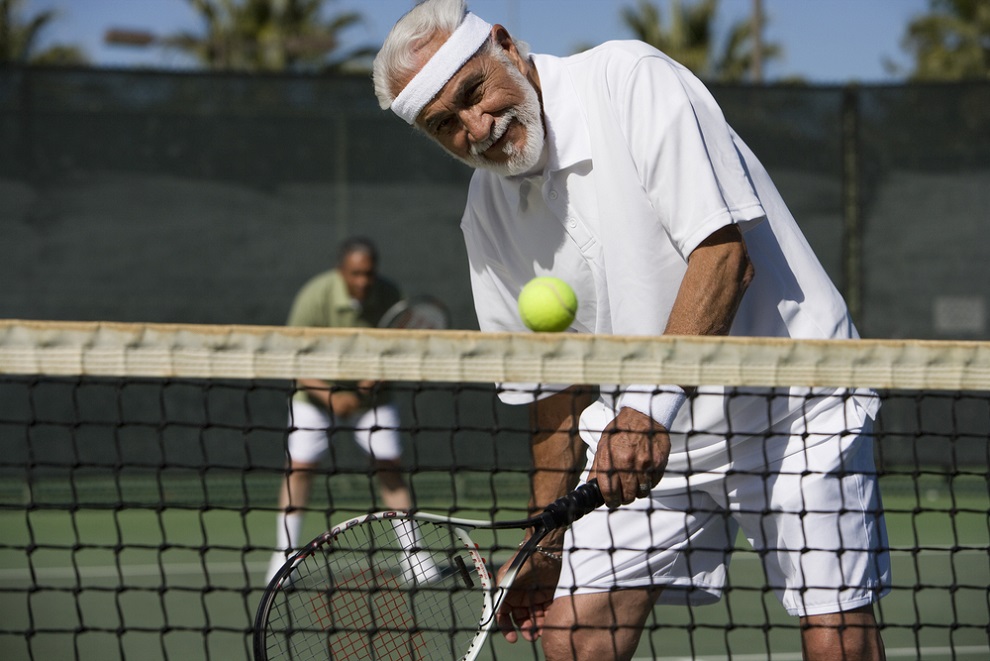Did you know that 40% of men over age 45 have low testosterone levels? That's a lot of people dealing with fatigue, muscle loss, and slower recovery.
Testosterone isn't just about building muscle; it also affects mood, energy, and overall health. Exercise is one of the best ways to support hormonal balance, but not all workouts work the same way. This brings up a big question: Does cardio lower testosterone?
Some say too much cardiovascular exercise can drop testosterone levels, while others claim it helps. The truth? It depends. The way cardio affects testosterone comes down to exercise intensity, duration, and type. Long-distance running might lower levels, while short bursts of high-intensity training could actually increase them. And it's not just about cardio; other factors like diet, sleep, and stress also have an impact.
This blog will dive into how different workouts affect testosterone production. We'll also compare endurance training to resistance training and see which is better for keeping testosterone levels steady.

What is Testosterone?
Testosterone is a naturally produced steroid hormone that regulates various bodily functions. It is primarily produced in the testes of men and the ovaries and adrenal glands of women.
Men produce about 5-10 mg per day, while women produce much lower amounts, around 0.5-1 mg daily. Testosterone influences muscle mass, bone density, red blood cell production, and libido, playing a vital role in overall health.
Testosterone levels naturally decline with age; however, the rate of decline varies. Normal levels typically range between 300-1,000 ng/dL in young men. By middle age, levels begin to drop gradually. By the time men reach their 60s and 70s, testosterone may fall below the normal range.
But aging isn't the only factor at play. Lifestyle habits play an important role as well. Factors such as diet, sleep, stress, and exercise all impact testosterone production. Some habits help keep levels steady, while others accelerate the decline.
How Does Exercise Affect Testosterone Levels?
Testosterone is an important hormone for muscle growth, fat metabolism, and overall well-being. Exercise affects testosterone levels, but the impact depends on the type, duration, and intensity of the workout.
Resistance exercise is one of the best ways to boost testosterone. Lifting heavy weights, especially with movements like squats and deadlifts, triggers a strong hormonal response. The more intense the session and the larger the muscle groups involved, the greater the testosterone spike.
Additionally, cardio workouts, like running or cycling, affect testosterone differently. Moderate cardio maintains healthy hormone levels, but too much endurance training might have the opposite effect. Long-distance running or high-volume cycling has been linked to lower testosterone levels, possibly due to prolonged stress and increased cortisol.
Furthermore, endurance training puts the body under significant strain for long periods. Research suggests that endurance athletes, especially those training at high volumes, tend to have lower testosterone levels. The combination of high energy demands and increased plasma volume may reduce circulating testosterone over time.
Exercise intensity matters just as much as exercise type. High-intensity workouts often cause a temporary surge in testosterone, while lower-intensity activities tend to have a smaller effect. But pushing too hard without proper recovery can work against hormonal balance.
A balanced mix of cardio and strength training keeps testosterone levels in check. Understanding how workouts influence hormones can help you structure a fitness plan that supports long-term health and performance.
Link Between Cardio and Testosterone
Cardio workouts, especially endurance training, can impact testosterone levels differently. A moderate amount of aerobic exercise supports overall health without a major effect on hormones.
However, when endurance exercise becomes excessive, testosterone levels can drop. Long-distance running and high-volume training have been linked to lower serum testosterone. Endurance training puts the body under prolonged stress.
When workouts last too long, cortisol levels rise, interfering with testosterone production. Since endurance training demands so much energy, the body may suppress testosterone production to conserve resources. Testosterone levels can also appear lower right after endurance exercise due to changes in plasma volume. When plasma volume increases post-exercise, it dilutes serum testosterone, making it seem like levels have dropped.
While this is temporary, frequent endurance workouts without enough recovery can cause long-term decline. The effects of endurance training on testosterone depend on intensity and recovery. Moderate cardio benefits heart health and metabolism, but too much can throw off hormonal balance. Combining strength training and cardio can steady testosterone levels while supporting overall fitness.
Why Chronic Endurance Exercise May Lower Testosterone
Cortisol, a stress hormone, increases during long endurance workouts. When cortisol stays high, testosterone production decreases.
The body focuses on conserving energy for extended training rather than maintaining optimal hormone levels. Athletes who push through back-to-back endurance sessions without proper recovery often experience lower testosterone over time. Studies show that endurance-trained men and elite athletes usually have lower testosterone than those focusing on strength or anaerobic workouts.
Additionally, sleep deprivation is a major contributor to hormonal imbalances, including low testosterone. Sedentary men who don't get enough physical activity also struggle with low T. A mix of high cortisol, lack of rest, and excessive endurance training can keep testosterone levels suppressed.
However, not all cardio lowers testosterone. Moderate exercise and high-intensity interval training (HIIT) have been shown to boost testosterone levels. Short bursts of anaerobic exercise, like sprinting or explosive strength moves, can elevate testosterone after a workout. The key is to balance different types of exercise rather than overloading on endurance training.
Strength Training vs. Cardio - Which is Better for Testosterone?
Strength training and cardio affect testosterone differently. A solid resistance training session leads to an immediate spike in testosterone.
Lifting heavy weights, especially with big movements like squats and deadlifts, pushes the body to release more testosterone. This boost helps with muscle growth, recovery, and overall strength. Over time, regular weight training builds muscle and keeps hormones in check.
Cardio, especially long-duration endurance training, works differently. While it benefits heart health, it does not trigger the same testosterone response as lifting weights. Prolonged cardio can cause the body to shift focus toward endurance rather than muscle growth. Over time, this causes lower testosterone concentrations.
A balanced approach to fitness can optimize testosterone levels. Weight training should be a primary focus for those looking to maintain muscle mass and support hormonal health. However, moderate amounts of cardiovascular exercise still benefit heart health and overall well-being.

Balancing Exercise for Testosterone Optimization
The way you exercise directly affects testosterone levels. Strength training boosts testosterone and builds muscle, while too much endurance cardio can lower hormone levels over time. A balanced routine supports fitness and hormone health without overstressing the body.
A smart approach includes weight training with enough cardio to support heart health. Lifting heavy weights increases testosterone by working multiple muscle groups and triggering muscle growth. Compound movements like squats, deadlifts, and bench presses are especially effective.
Short bursts of cardio, like sprints or HIIT, improve endurance without affecting testosterone. On the other hand, moderate-intensity endurance training can raise cortisol and lower testosterone if overdone. The key is training intensity and duration. Resistance training should be the focus, with cardio added in short, controlled sessions. A mix of moderate cardio and strength training keeps testosterone levels steady and keeps energy levels high.
Workout Plan for Healthy Testosterone Levels
Day 1: Heavy resistance training (squats, deadlifts, bench press, rows) + 10 minutes of moderate-intensity cardio
Day 2: Rest or active recovery (walking, mobility work)
Day 3: Resistance training (overhead press, lunges, pull-ups, core work) + 10-15 minutes of HIIT
Day 4: Rest or light cardio (cycling, swimming)
Day 5: Full-body strength training (deadlifts, push-ups, dips, core) + short cardio session
Day 6: Low-intensity activity (yoga, stretching, walking)
Day 7: Rest or active recovery
This plan includes just the right amount of cardio and resistance training to build muscle and boost testosterone. Recovery days prevent burnout, keeping the body strong and hormones in balance.
Lifestyle Factors That Influence Testosterone Beyond Exercise
Testosterone levels depend on more than exercise. Sleep, diet, and stress management also affect hormone balance. Daily habits can support or disrupt testosterone production, influencing energy, muscle growth, and overall well-being.
Sleep
Good sleep is one of the best ways to support testosterone. The body produces most testosterone during deep sleep, especially early morning. Sleeping less than five hours a night can cause a major drop in hormone levels. To keep testosterone in check, it is recommended that you get seven to nine hours of quality sleep.
Diet
Food plays a huge role in testosterone levels. Protein helps repair muscle, while healthy fats like avocados, nuts, and olive oil support hormone production.
Zinc and vitamin D are especially important since low levels of these nutrients can cause testosterone to drop. Eat whole foods and avoid processed junk to notice a big difference. Supplementation can provide additional support for those struggling with low testosterone despite a balanced diet and lifestyle.
Options like Testosterone Cypionate Injections and Lipoderm Cream from Male Excel offer targeted hormone therapy to help restore optimal levels. Since age-related declines in anabolic hormones like testosterone contribute to the loss of muscle size and strength over time, these treatments can improve energy, muscle mass, and overall well-being.
Stress
Stress isn't just exhausting; it can mess with testosterone, too. When cortisol stays high for too long, the body shifts focus away from muscle growth and hormone production.
This can leave you feeling drained, slow recovery after workouts, and throw hormone levels off balance. Simple activities like deep breathing, walking, or taking a short break from screens can effectively regulate cortisol levels. Even minor adjustments, such as incorporating short breaks into your day or improving sleep quality, can yield significant benefits.
Alcohol
Drinking too much alcohol lowers testosterone and slows down muscle recovery. Heavy drinking disrupts hormone balance, but occasional moderate consumption has a smaller effect. Cut back on alcohol to keep testosterone at healthy levels.
Toxins
Certain everyday products contain chemicals that interfere with testosterone. Many plastics, pesticides, and personal care items contain chemicals that interfere with hormone production.
Bisphenol A (BPA), commonly found in plastic containers and canned food linings, mimics estrogen in the body, which can throw off hormonal balance. Pesticides used on fruits and vegetables also contain endocrine disruptors that impact testosterone over time.
Simple changes can reduce exposure to these harmful substances. Choose glass or stainless-steel containers instead of plastic to limit BPA intake. Additionally, organic foods lower the risk of consuming pesticide residues that affect hormone levels. Natural personal care products, free from parabens and phthalates, provide a safer alternative to chemical-laden shampoos, soaps, and lotions.
Conclusion
Does cardio lower testosterone? The answer is far from a simple yes or no. Cardio does not automatically lower testosterone; rather, its effects depend on your training approach.
Short, high-intensity sessions or moderate cardio can support testosterone, while long, grueling endurance workouts might lead to lower levels over time. The key is balance. A good workout plan includes a mix of strength training, moderate cardio, and HIIT.
Strength training, in particular, is crucial as it helps build muscle and maintain testosterone levels. Short, intense workouts add extra benefits, while too much endurance exercise can sometimes lower testosterone, especially without proper recovery. Good sleep, a solid diet, and managing stress also make a big difference.

Get TRT Online
Optimize Your Hormones





